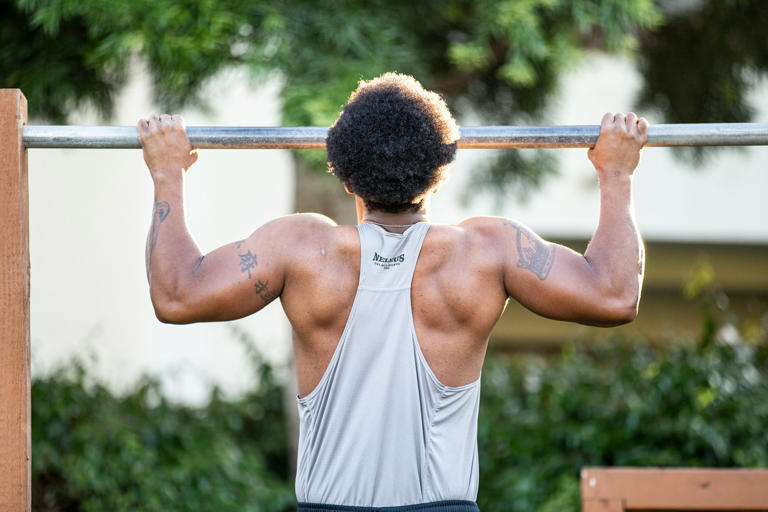
Building muscle is often associated with heavy lifting, but lightweights are an underrated yet highly effective tool in the world of strength training. Whether you’re a beginner or a seasoned gym-goer, understanding how to use lightweights properly can take your muscle-building efforts to the next level. In this guide, we’ll dive into five key reasons why lightweights are crucial for achieving sustainable and long-term muscle growth.
Why Lightweights Work for Muscle Growth
When people think about building muscle, they usually picture heavy barbells and dumbbells. However, lightweights—when used correctly—can be just as powerful for hypertrophy (muscle growth). In fact, focusing on lightweights allows for better muscle activation, higher repetitions, and improved technique. Here’s how lightweights can become a game-changer for your workout routine.
1. Progressive Overload with Lightweights
One of the most fundamental principles of building muscle is progressive overload. This means gradually increasing the demands placed on your muscles over time. Traditionally, people think this involves constantly adding weight to the bar, but that’s not the only way to create overload. Lightweights can still induce overload if used correctly.
For example, you can increase the number of repetitions, reduce rest times between sets, or even slow down the tempo of your lifts. These techniques force your muscles to adapt to new stimuli, even when the weights aren’t particularly heavy. Think of it like managing a farm—if the farm gets bigger, you need more farmers to tend to the crops. In this analogy, your myonuclei (the cells responsible for muscle growth) are the farmers, and your muscles are the crops. The more myonuclei you recruit through lightweight training, the bigger your muscles can grow.
2. Avoid Muscle Plateaus by Rotating Exercises
Another important reason to incorporate lightweights into your routine is to prevent hitting a plateau. Many people who only rely on heavyweights tend to focus on the same few exercises over and over again, leading to stagnation. Much like a farmer who plants the same crop year after year, this method will eventually lead to diminishing returns.
The solution? Exercise variation, especially with lightweights. When you switch up your routine and add new exercises into the mix—like isolation movements or functional exercises—you stimulate different muscle fibers and avoid burnout. Lightweights allow you to perform these variations without the risk of injury that often accompanies heavyweights.
Just like a farmer rotates crops to ensure the soil remains fertile, you need to rotate between exercises to keep your muscles growing. For example, if your bench press is stuck, try working on auxiliary movements like tricep extensions or front raises using lightweights. By addressing weak points, you pave the way for new strength gains in your major lifts.
3. Eccentric Overload and Muscle Stretching

Incorporating lightweights isn’t just about doing more reps—it’s also about focusing on the eccentric phase of the movement. The eccentric phase, or the “negative,” refers to the lowering part of any exercise, like lowering a dumbbell during a bicep curl. This part of the movement is crucial for stimulating muscle growth, especially when combined with lightweights.
Eccentric overload happens when you place the muscle under tension during this lowering phase, and it’s one of the most effective ways to create tiny tears in your muscle fibers that will repair and grow stronger. The beauty of lightweights is that they allow you to extend this eccentric phase with better control, leading to greater results without straining your joints or risking injury.
Think of eccentric overload like the balance between sun and rain on a farm. Both are necessary for crops to grow, but too much of either can harm the plants. Similarly, in muscle training, you need the right amount of tension and stretch to promote muscle growth. With lightweights, you can control this balance more effectively than with heavier weights.
4. High Reps with Lightweights for Metabolic Stress
When you lift lightweights, one of the most important things you can do is push yourself to a point of muscle failure. This doesn’t just mean doing enough reps until you feel a burn—it means continuing until you can’t physically perform another repetition with proper form. Reaching this point of failure is critical for creating metabolic stress, which is one of the key drivers of muscle hypertrophy.
Metabolic stress occurs when muscles are deprived of oxygen during high-rep sets, causing a buildup of metabolites like lactic acid. This process signals the body to adapt by increasing muscle size and endurance. Think of it as setting up an irrigation system for your crops—a steady, controlled supply of water ensures healthy, consistent growth. Similarly, high-repetition sets with lightweights ensure steady progress in your muscle-building efforts over time.
The beauty of this method is that it doesn’t require heavyweights to be effective. By focusing on form and pushing your muscles to their absolute limit with lightweights, you create the same level of muscle stimulation without risking injury or burnout.
5. The Role of Satellite Cells in Muscle Growth
When you train to muscle failure with lightweights, you activate satellite cells—specialized cells that help repair and build muscle tissue. These cells assist in increasing the number of myonuclei within muscle fibers, making it easier for your muscles to grow larger over time.
Think of satellite cells as extra farmers working on your muscle “farm.” The more farmers (or myonuclei) you have, the more efficiently your muscles can grow. This process is especially important when using lightweights because it allows for consistent muscle-building without the wear and tear that comes from constantly lifting heavyweights.
Conclusion: Lightweights Are Key for Sustainable Muscle Growth
If you’re serious about achieving long-term, sustainable muscle growth, you need to incorporate lightweights into your workout routine. By using high repetitions, focusing on the eccentric phase, and pushing yourself to muscle failure, you can build muscle effectively and safely. Remember, lightweights don’t just offer a physical break from heavy lifting—they provide a fresh stimulus that encourages your muscles to grow in new ways.
Don’t be fooled by the simplicity of lightweights. When used correctly, they can lead to impressive gains in both size and strength. Whether you’re just starting out or looking to break through a plateau, embracing lightweight training can help you reach your fitness goals more efficiently.


